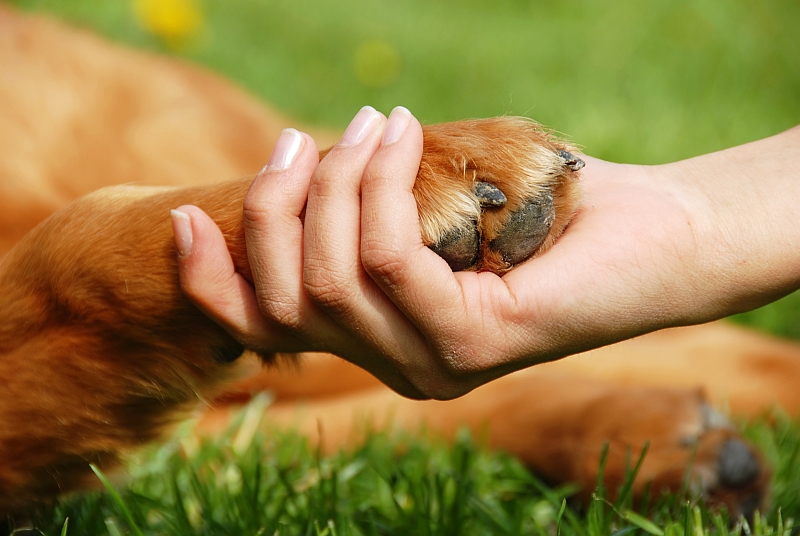Of all the physical characteristics of pets, we seldom consider pet paws. Puppy feet and kitty toes tread on unsightly surfaces that we would honestly rather not think about. Unless forced to give them attention by some injury or the sight of our pet limping, our minds just do not gravitate to an animal’s paws. Sadly, our pet’s paws suffer because of it. Learn how to treat your dog or cat’s most frequently used feature, and keep their feet in good condition.
Nail care: Ladies, this is a subject you will doubtless appreciate. A dog’s nails need attention to ensure that they do not grow too long, becoming hazardous to themselves or others. Nails impact a pet’s balance, digging, chewing, scratching and climbing ability and should be well maintained for these purposes. A dog’s nails should just barely touch the ground when they walk, so look out for “clicking” nails as an indication that they are getting too long. Make sure you have a good pair of nail clippers so you can keep these intact in between trips to the groomers. Some pet owners also choose to get their cat or dog’s nails professionally buffed or capped from time to time as an extra treatment.
Paw cleaning: It is common for adventurous pets to get sores on their paws either from walking on rough surfaces with bumpy or sharp objects such as gravel, glass, wood chips, etc. Burrs easily get stuck between the toes, and caught in the fuzz around the paw pad. Whether it is a burr, a pebble, a thorn or a splinter, have a pair of tweezers on hand so that they can easily be removed. If for some reason the object does not want to budge, soak the paw in some warm water for a few minutes beforehand to help loosen things up.
Disinfect: After long walks over filthy surfaces, pet parents can take comfort in disinfecting their dog’s or kitty’s paws before they are allowed to tread all over the house, couches, bed cushions and pillows. Anti-bacterial wipes for pets are handy to keep at the front door so you can wipe their paws upon returning home. It is a good idea in general to have a glance at your pet’s feet before they head for their favorite napping corner. If there is a scrape, cut or puncture that they may have gotten on their adventure, make sure to cleanse with soap and water or a disinfectant wipe, followed by bandaging the area with a gauze and anti-bacteria ointment to avoid infection.
Moisturizing: When exposed to hot surfaces in summer, and warm dry air in the wintertime, a dog or cat’s paws will commonly dry out, becoming rough and sandpapery. While you do not want to fully soften the paw pad (which functions as your pet’s shoes, and ought to be hardy enough to withstand walking for miles outside), moisturizing the paw will keep cracks and bleeding far away. Pet stores offer many balms, moisturizing rubs and pet-lotions to soothe sore feet and mend cracking paws. This is a useful tool to keep around in the winter and summertime when paws are at their most vulnerable points.
Pets can also get their paw pads buffed if there are corns, callouses or large knobby areas that might be affecting either their balance or comfort. Speak to your vet or local groomer about what they recommend for your pet.
Massaging: This is not regarded as the most important element of pet paw care, but rubbing their paws and offering a gentle massage will not only comfort your pet, but will increase healthy blood flow, soothe sore muscles, and further bonding time with your feline or canine pal. Be careful to work slowing and gently, remembering that the paw pads carry all the pet’s weight on hard or painful surfaces, and might be sensitive after a hard day’s use.

